Trigger Point Therapy - Climber's Elbow
Triceps Trigger Points - Commonly Associated With Elbow Pain
You don't need to be a climber to suffer from climber's elbow
Climber’s Elbow (medial epicondylitis apophysitis) is a condition that causes pain and inflammation in the tendons that connect the elbow to the forearm.
It occurs around the bony bump on the inner side of your elbow. The pain may also be felt into the forearm and wrist.
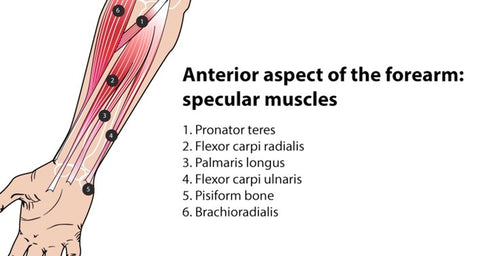
Climber’s Elbow will usually develop as a result of overuse to the muscles in the forearm that enable rotation of the arm, flexion of the wrist, and to grip with the hand.
By repeatedly effecting the same arm movement (typically associated with climbing), considerable stress is placed on the related muscles, tendons, and joints.
This over time can cause injury from tiny tears in the tendons.
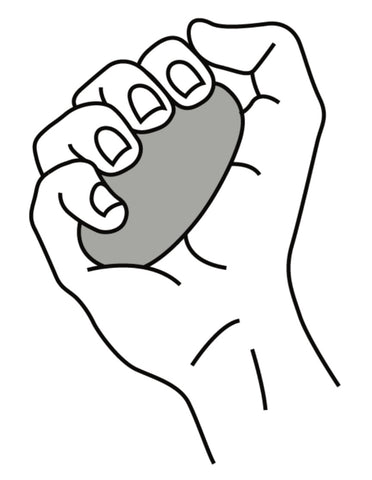
Squeezing a ball as shown is a simple exercise that may provide some relief
What Are the Symptoms of Climber’s Elbow?
In most cases, the pain develops slowly and gradually over weeks and months in the elbow area. It is less common for the symptoms to occur suddenly.
The client may feel stiffness in the elbow and it may be painful to make a fist.
Pain and tenderness will be felt on the inner side of the elbow and sometimes the forearm too.
Some will also experience numbness and tingling, often into the 4th and 5th fingers. The hand and wrist may feel weaker too.
The pain can be anything from mild discomfort to severe, and it will commonly affect sleep. It is noticeable that the pain will increase when forcibly trying to stabilize or move the wrist.
In most cases, the pain will feel worse when:
• shaking hands• using tools
• gripping objects e.g. cutlery, pen, computer mouse
• fully extending your arm
• turning a door knob
• lifting
Who Is Prone to Climber’s Elbow?
Climber’s Elbow affects around 1-3 percent of the general population.
Studies have shown that pain on the medial epicondyle (Climber’s Elbow) is about twice as common in men than women, and that sufferers tend to be between the ages of 35 and 50.
Older people tend to be more prone due to the continuous repetitive movements over time leading to wear and tear of the tendons.
It's not just climbers who suffer from this condition.
Anyone who participates in activities that require repetitive and vigorous use of the forearm muscle, especially while gripping something, are more susceptible.
We often see this condition develop in cooks, gardeners, assembly-line workers, and people who play sports such as baseball and football.
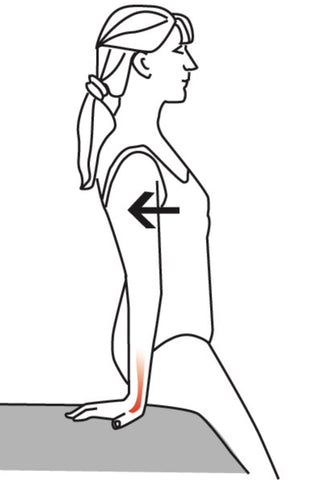
Flexor Stretch can be useful for Climber's Elbow
Differential Diagnosis - What Else Could It Be?
Here is a list of some other conditions which can mimic a Climber’s Elbow:
• Trauma (fracture)• Problems with the radial head of the radius bone at the elbow joint
• Problems with the discs in the neck C6/7 neuropathy (cervical disc)
• Dysfunction to the triangular articular cartilage disc at the wrist
• Osteoarthritis of the inner side of the elbow joint
• Ulnar collateral ligament injury
• Cubital tunnel syndrome (ulnar nerve compression syndrome)
• Guvon’s canal syndrome (ulnar nerve compression syndrome)
• Golfer’s Elbow
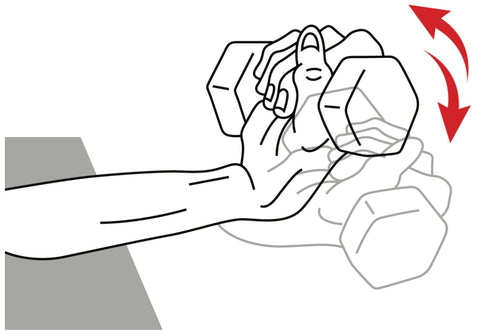
Exercising the Flexor Muscles - using a light weight (or can of food) - to aid rehabilitation and possibly help dissipate trigger points as part of some treatment protocols.
Trigger Point Therapy
There are well established trigger point treatment protocols that can be very effective for most cases.
Generally when treating climber's elbow, we look for trigger points in pronator teres, flexors, palmaris longus, and the triceps (medial head).
For best results, these trigger points are treated with compression techniques in combination with strengthening and stretching exercises.
Your therapist may also advise on certain required lifestyle changes.
Links
Find a Trigger Point Professional in your area
More Articles About Trigger Points
More Articles About Elbow Pain
Certify as a Trigger Point Therapist
About NAT Courses
As a manual therapist or exercise professional, there is only one way to expand your business - education!
Learning more skills increases the services that you offer and provides more opportunity for specialization.
Every NAT course is designed to build on what you already know, to empower you to treat more clients and grow your practice, with a minimal investment in time and money.
Help Desk
About Niel Asher Education
Niel Asher Education is a leading provider of distance learning and continued education courses.
Established in the United Kingdom in 1999, we provide course and distance learning material for therapists and other healthcare professionals in over 40 countries.
Our courses are accredited by over 90 professional associations and national accreditation institutions including the National Academy of Sports Medicine (NASM) and National Certification Board for Therapeutic Massage and Bodywork (NCBTMB). Full details of all international course accreditations can be found on our website.
Printed course materials and other products offered on our websites are despatched worldwide from our 3 locations in the UK (London), USA (Pennsylvania) and Australia (Melbourne).
More About Us
NAMTPT AWARD
We are honored to have received the "Excellence in Education" Award from the National Association of Myofascial Trigger Point Therapists.
Since 1999 Niel Asher Education has won numerous awards for education and in particular for education and services provided in the field of trigger point therapy.
Read Full Article
Award Winning Instructors
Niel Asher Healthcare course instructors have won a host of prestigious awards including 2 lifetime achievement honorees - Stuart Hinds, Lifetime Achievement Honoree, AAMT, 2015, and Dr. Jonathan Kuttner, MD, Lifetime Achievement Honoree, NAMTPT, 2014.
Meet the Instructors
Accreditation

If you are a qualified/licensed manual therapist or exercise/fitness professional you can expand your credentials with NAT certification.
In addition to national accreditation for continued education, each course that we offer includes "NAT Learning Credits". By taking and completing courses you can accumulate NAT credits to qualify for NAT certification.
There are currently 3 levels of NAT certification. Certifying NAT is a valuable way to show your clients that you take continued education seriously, and to promote your skills and qualifications.
Most of our courses are accredited for CE/CPD/CPE. A full list of CE accreditations can be found by clicking on the link below.
About NAT Certification
Niel Asher Technique
Since 1999 the Niel Asher Technique for treating trigger points has been adopted by over 100,000 therapists worldwide, and has been applied to the treatment of a number of common musculoskeletal injuries.
The Niel Asher Technique for treating frozen shoulder was first introduced and published in 1997 and has been widely adopted by therapists and exercise professionals working within elite sports and athletics.
Read More
International Students
Most of our courses are available as either "Printed" or 'Download" editions, wherever you live. Internet connection is required to access online and downloadable material.
When you purchase a download edition, you receive immediate lifetime access to all course material. Course texts can be downloaded and printed if required.
When you purchase a "Printed" edition, you will also receive free access to the download edition.
We ship Worldwide from locations in the USA, UK, and Australia. Most items are despatched within 24 hours and shipping is FREE for all orders over US$50.
Shipping
Where to Start?
We offer a range of over 50 courses, presented by some of the worlds leading manual therapists. All courses are reviewed annually, and new courses are regularly added.
Our courses are modular, and designed to build on what you already know. For more information, please visit our "Where to Start?" page.
Start Here
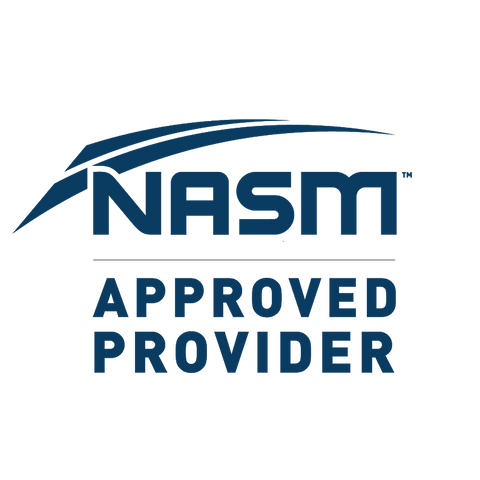

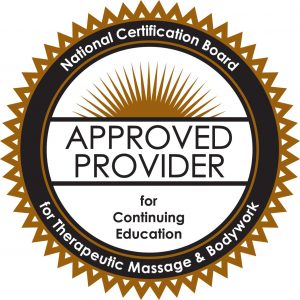
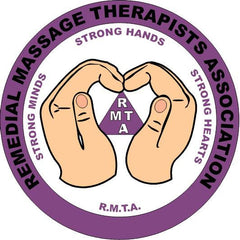

This trigger point therapy blog is intended to be used for information purposes only and is not intended to be used for medical diagnosis or treatment or to substitute for a medical diagnosis and/or treatment rendered or prescribed by a physician or competent healthcare professional. This information is designed as educational material, but should not be taken as a recommendation for treatment of any particular person or patient. Always consult your physician if you think you need treatment or if you feel unwell.
About Niel Asher Education
Niel Asher Education (NAT Global Campus) is a globally recognised provider of high-quality professional learning for hands-on health and movement practitioners. Through an extensive catalogue of expert-led online courses, NAT delivers continuing education for massage therapists, supporting both newly qualified and highly experienced professionals with practical, clinically relevant training designed for real-world practice.
Beyond massage therapy, Niel Asher Education offers comprehensive continuing education for physical therapists, continuing education for athletic trainers, continuing education for chiropractors, and continuing education for rehabilitation professionals working across a wide range of clinical, sports, and wellness environments. Courses span manual therapy, movement, rehabilitation, pain management, integrative therapies, and practitioner self-care, with content presented by respected educators and clinicians from around the world.
Known for its high production values and practitioner-focused approach, Niel Asher Education emphasises clarity, practical application, and professional integrity. Its online learning model allows practitioners to study at their own pace while earning recognised certificates and maintaining ongoing professional development requirements, making continuing education accessible regardless of location or schedule.
Through partnerships with leading educational platforms and organisations worldwide, Niel Asher Education continues to expand access to trusted, high-quality continuing education for massage therapists, continuing education for physical therapists, continuing education for athletic trainers, continuing education for chiropractors, and continuing education for rehabilitation professionals, supporting lifelong learning and professional excellence across the global therapy community.

Continuing Professional Education
Looking for Massage Therapy CEUs, PT and ATC continuing education, chiropractic CE, or advanced manual therapy training? Explore our evidence-based online courses designed for hands-on professionals.




















